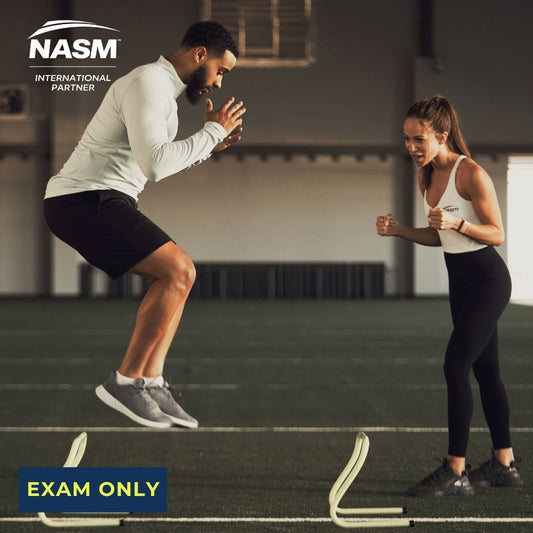If you're a personal trainer in Canada, you've probably heard about NASM’s Optimum Performance Training (OPT™) Model. But what is it really and how can it help you build better programs, get better results, and grow your reputation as a coach? In this post, we’ll break down the Phase 1 OPT™ Model the stabilization endurance training in a simple, no-fluff way, so you can start using it right away.
What Is the NASM OPT™ Model?
The NASM Optimum Performance Training (OPT™) Model is a science-backed system designed to help fitness professionals create effective, progressive training programs. It’s structured into five phases: Stabilization Endurance, Strength Endurance, Hypertrophy, Maximal Strength, and Power. Each phase builds on helping clients improve in a safe and strategic way.
What Is Phase 1 of the OPT™ Model?
Phase 1 is called Stabilization Endurance. It’s the first stop in NASM’s training model, and it's where every smart program should begin. Why? Because most people who walk into a gym aren’t ready to jump into heavy lifting or high-intensity workouts. Their bodies need a strong foundation first.
Stabilization training focuses on improving balance, coordination, joint stability, and muscular endurance. This is where you help clients move better, feel stronger in everyday activities, and lower their risk of injury, especially important for beginners, older adults, and clients returning from injury.
Key Features of Phase 1:
- Low-to-moderate intensity
- High reps, low weight
- Controlled, deliberate movements
- Use of unstable surfaces like balance balls or single-leg positions

Who Is It For? Stabilization training is ideal for:
- New clients who are just starting out
- Clients with muscle imbalances or poor posture
- Anyone coming back from an injury
- Older adults looking to build functional strength safely
Why Stabilization Endurance Works?
Building stability helps activate deep muscles, especially around the core and joints. It also sets the stage for more advanced training by teaching proper form and body control. Skipping this phase often leads to injury and plateaus later on.
How to Apply Stabilization Endurance?
Use exercises like planks, balance lunges, ball squats, and single-leg cable rows. Keep the tempo slow. Focus on form. And remember, the goal here isn’t to max out weight—it’s to create a stable, functional base your clients can build on.
Why NASM’s Optimum Performance Training (OPT™) Phase 1 Matters?
Starting with stabilization is a game-changer for new or novice clients. They're often intimidated, unsure, and unaware of how to move correctly. Phase 1 helps them feel successful early on. Instead of rushing into intense workouts, they build the confidence, control, and basic strength they need to stick with their plan. This phase lays the groundwork for better posture, pain-free movement, and real progress—especially for clients who sit all day, deal with stress, or haven’t exercised in years. When new clients feel good and see early wins, they stay longer and trust your coaching more.
Bonus Tip: If you're using NASM’s programs through NPTA, combine Phase 1 insights with the Corrective Exercise Specialization to better assess movement and prescribe the right exercises from the start.
Next Steps: Once clients master stabilization and can move confidently, that’s when you introduce them to Phase 2: Strength Endurance. But Phase 1 is where their journey begins and where smart, client-first training really takes shape.
READ MORE BLOGS:
- Phase 2: Strength Endurance – OPT Model for Beginners
- Smarter Approach to Stability & Strength
- Guide to Consistency and Success





